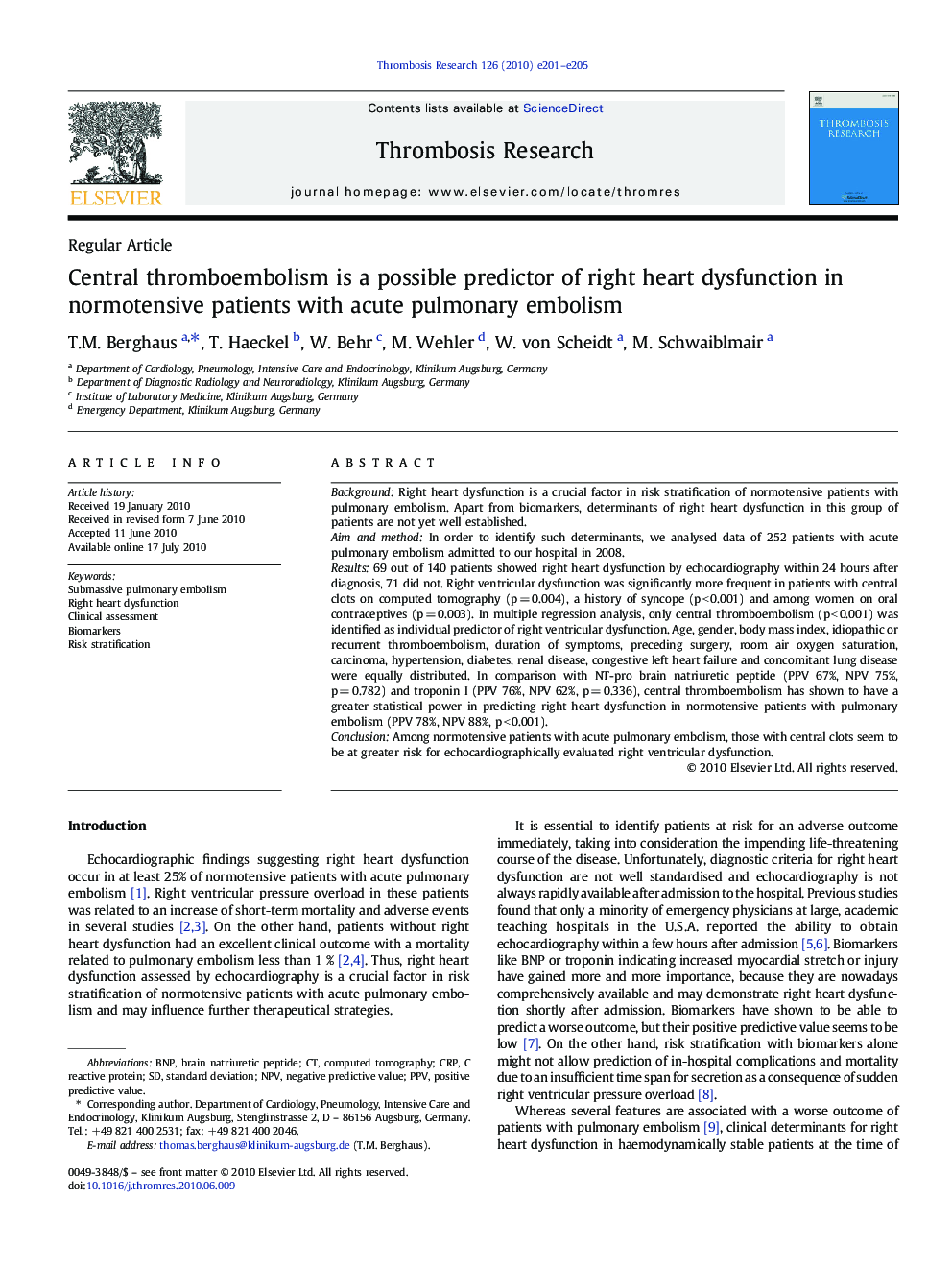| Article ID | Journal | Published Year | Pages | File Type |
|---|---|---|---|---|
| 3029317 | Thrombosis Research | 2010 | 5 Pages |
BackgroundRight heart dysfunction is a crucial factor in risk stratification of normotensive patients with pulmonary embolism. Apart from biomarkers, determinants of right heart dysfunction in this group of patients are not yet well established.Aim and methodIn order to identify such determinants, we analysed data of 252 patients with acute pulmonary embolism admitted to our hospital in 2008.Results69 out of 140 patients showed right heart dysfunction by echocardiography within 24 hours after diagnosis, 71 did not. Right ventricular dysfunction was significantly more frequent in patients with central clots on computed tomography (p = 0.004), a history of syncope (p < 0.001) and among women on oral contraceptives (p = 0.003). In multiple regression analysis, only central thromboembolism (p < 0.001) was identified as individual predictor of right ventricular dysfunction. Age, gender, body mass index, idiopathic or recurrent thromboembolism, duration of symptoms, preceding surgery, room air oxygen saturation, carcinoma, hypertension, diabetes, renal disease, congestive left heart failure and concomitant lung disease were equally distributed. In comparison with NT-pro brain natriuretic peptide (PPV 67%, NPV 75%, p = 0.782) and troponin I (PPV 76%, NPV 62%, p = 0.336), central thromboembolism has shown to have a greater statistical power in predicting right heart dysfunction in normotensive patients with pulmonary embolism (PPV 78%, NPV 88%, p < 0.001).ConclusionAmong normotensive patients with acute pulmonary embolism, those with central clots seem to be at greater risk for echocardiographically evaluated right ventricular dysfunction.
